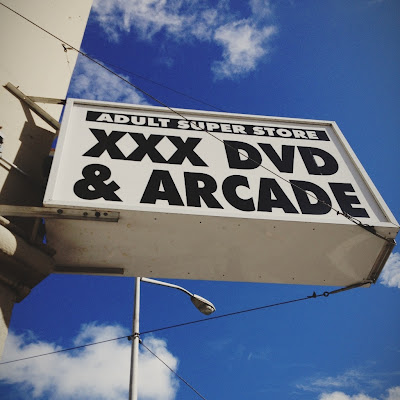Eva Dunn
Professor Stacy Asher
Art 195
November 26, 2012
Memory Lane
Fisherman’s Wharf has been a staple in my childhood
memories. Because I have lived in San
Jose or Campbell my entire life, my parents would take my siblings and me to
Fisherman’s Wharf for little day trips.
We would go and get something to eat, walk to see the seals, and go into
the candy shop to get candy. Because it
was such a huge part of my childhood, this field trip was a walk down memory
lane, literally, seeing as I walked the entirety of the thoroughfare. Because of my new perspective on signage from
this class, however, it was very interesting to walk through Fisherman’s Wharf
and notice all the signage around me.
Many signs help direct people to tourist attractions, inform of the
past, and advertise commercial goods.
There was a lot of signage, I noticed, that directed people
to different tourist attractions. For
one, all of the piers were well-labeled and as I walked down the street, I
could see all the different piers that there were. There were two tourist attractions that were
the best advertised. The first was
Alcatraz. Alcatraz was advertised
beautifully because the signs not only drew people in, but also informed, which
is very important for tourist signage.
Many of the signs showed previews of what it was like for prisoners in
Alcatraz way back when. Because I have
actually been to Alcatraz, it was very interesting to see the signage that
depicted it. I feel as if the signage
was an accurate preview, if you will, to the actual tour on the island. I think that advertising tourist attractions
needs to be bright, bold, and big, and Alcatraz’s advertisements definitely
adhered to these rules. Some signs were
bright, some signs were big, and all of the signs were bold. Another tourist attraction that was
well-advertised was Pier 39. Even before
we arrived at Pier 39, there were flags advertising it. One of my group members thought we were in
Pier 39 because of the flags that were placed well up the street from the
actual pier. However, I felt as if the
signage for Pier 39 also followed the 3 rules I came up with for tourist
advertisements; they were bright, bold, and big.
Walking down the street, I had to imagine what it would have
been like many years ago. In 1906,
before the fire, Fisherman’s Wharf was not even developed yet. This is a very interesting concept for
me. Maybe people took long walks along
the thoroughfare and instead of seeing all of the signs, saw a beautiful view
of the ocean. Although times were
different back then, I still feel as if walking down that street is an
experience, whether it is an ocean view, or a view of all of the piers and
restaurants.
Overall, I quite enjoyed the Fisherman’s Wharf trip because
I got to see a childhood memory through a new lens, if you will. I even came up with a 3-part rule for tourist
advertisement signage: bright, bold, and big.
Everyone in San Francisco should take the chance to visit Fisherman’s
Wharf and experience it for themselves.







































































